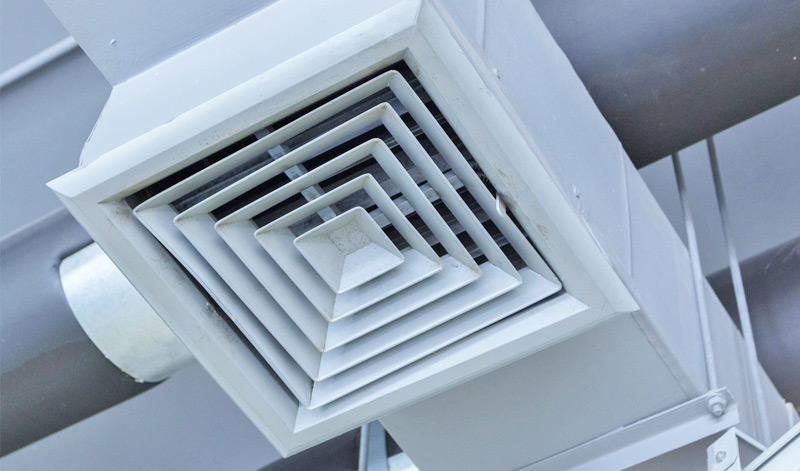
Ventilation and Air Quality: Problems and Solutions
HVAC systems are designed to maintain comfort and maximize indoor air quality. While heating and air conditioning are relatively straightforward, complex ventilation systems determine the quality of the indoor environment. The health problems associated with poor indoor air quality reduce productivity and cost billions of dollars each year. A well-designed, properly maintained ventilation system can help to improve your profitability.
Indoor air pollution and health issues
Indoor air pollution is caused by the buildup of contaminants coming primarily from inside the building. Common sources of indoor air pollution include tobacco smoke, biological organisms, building materials and furnishings, cleaning agents, copy machines and pesticides.
These pollutants can contribute to building-related illnesses that have clearly identifiable causes, such as Legionnaires’ disease. Ventilation systems that are improperly operated or maintained can contribute to Sick Building Syndrome. Symptoms include dry mucus membranes, and irritation of eye, nose, and throat.
These disorders lead to increased employee sick days and reduced work efficiency. The World Health Organization estimates that as many as 30% of new or remodeled buildings may have unusually high rates of health complaints. The National Institute for Occupational Safety and Health identifies poor ventilation as a significant factor contributing to many sick building cases.
Ventilation system problems and solutions
Ventilation is a combination of processes that move air into (and out of) buildings. Indoor air quality may deteriorate when one or more of these processes is inadequate. Increasing the supply of outdoor air is the most commonly used method for fixing indoor air problems, but system design problems and operational issues can impact indoor air quality.
- Air distribution. Do not block registers with furniture or equipment. The placement of partitions or barriers should not restrict airflow. Air supply and return air vents should be located at a reasonable distance to ensure balanced air distribution.
- Variable airflow. Designs specifying HVAC system operation at reduced or interrupted flow in response to space conditioning needs may impair contaminant removal. Define minimum ventilation rates by air cleanliness and distribution, as well as temperature and humidity.
- Vent placement. Air supply vents should not be located near sources of pollution, such as exhaust vents, heavy traffic areas and trash dumpsters. Carefully evaluate the location of all air supply vents.
- Scheduling. Ventilation system scheduling is critical to maintaining good indoor air quality. Schedule ventilation operation based on occupancy levels or operating hours. Demand control ventilation using carbon dioxide sensors can optimize indoor air quality and save energy.
Make a fresh start
Facility managers, building owners and occupants must work together to maintain good indoor air quality. Start with good maintenance practices:
- Regularly maintain the ventilation system to manufacturer’s recommendations
- Identify all sources of contaminants and develop controls to minimize them
- Eliminate practices that restrict air movement, such as blocking vents
- Educate building occupants about the need for proper air distribution
Optimizing indoor air quality requires ongoing monitoring and a commitment to continuous improvement. Record keeping is also important. See Building Air Quality from the Centers for Disease Control for more information on identifying, solving and preventing indoor air quality problems.
Stay up to date on code changes or revisions to ventilation standards that may affect your facility.